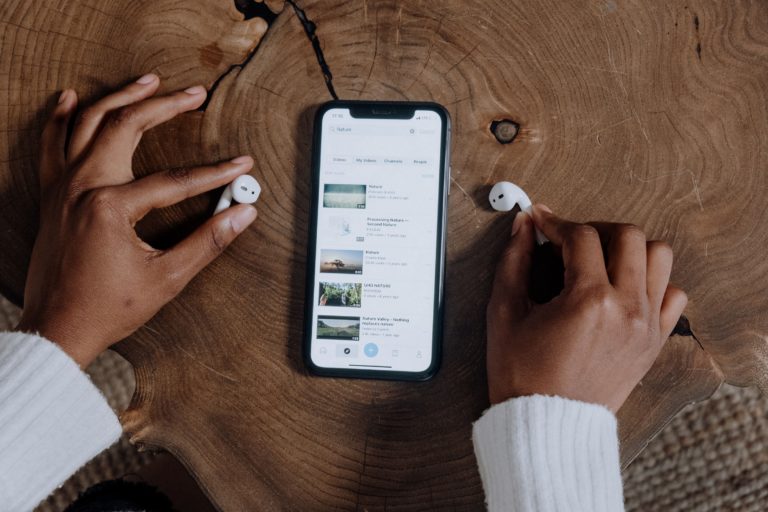
Subtitling VS Voice-over: All you need to know
Tough call? Maybe not!
You are laid back on your cosy sofa, and your favourite coffee is steaming on the table. The screen of your smartphone allows you to watch audiovisual content from all over the world. It doesn’t matter if it’s a training course or entertaining content. No trips to Uni, office, nearby video store or newspaper kiosk. No choice limitations. Times have changed.
So, if you work on localizing a project then you have noticed “big-sharks” like Netflix and Spotify already adopting a multilingual strategy. Maybe you have been wondering if a voice-over or subtitling will be the feature you choose.
Our years of experience in the industry have taught us that there is no one-style-fits-all recipe. So, we’ll break down these two options – voice-over vs subtitles – while analyzing the pros and cons of each.
Subtitles
Before we start the comparative analysis, we should try to define the two terms. In the context of language services, subtitling means: putting a written translation of spoken dialogue on screen simultaneously with the original audio. Subtitling has two main categories:
-
Intralingual: done in the language spoken and includes background noise information like “phone rings”.
-
Interlingual: done in different languages from the spoken one.
Subtitles are thought of as one of the cheapest options you can get. But there are many limitations that you should be aware of. Base your choice on your audience and the kind of content you have because subtitles aren’t for everyone.
Use subtitles if:
- Your target audience has a good level of understanding of the audio language.
- The audience can easily follow up the “emotional” undertone while reading the subtitles.
- There is an advanced skill of reading while watching. Be aware of the number of words and speed of the subtitles, or you’ll risk information getting lost.
Avoid subtitles if:
- The targeted audience does not speak the language of the audio.
- There is already a lot of text on your screen or the content reflects complex topics.
- You include pie charts, infographics, or illustrations to avoid “text-clutter”.
- You have two or more speakers
- There is strong background/cultural information
Voice-Over
Voice-over, in the media industry, is a piece of narration added in visual or audio content, and it’s not accompanied by an image of the speaker. Voice-overs are the best solution when it comes to successful content localization. Here is why:
- Demands less effort for understanding. No reading required
- Leaves no place for puzzlement or misinterpretation
- Encapsulates emotional language
- Impactful and memorable
- Creates a feeling of comfort and easiness

Best Practices
Voice-over Is the Most Popular Choice When It Comes to:
-
Commercial projects
These are projects created to promote a product or service in the form of an advertisement that will be presented on television, radio, web, or social media platforms. This is why big companies like Spotify or Volvo always localize their campaigns based on the target audience’s native language and culture to ensure highly impactful content.
-
Narration
Think of Planet Earth or National Geographic. Narration projects are projects in which a voice narrates over images or motion pictures to help tell the story either from a character’s perspective or a third party. For such projects, which usually include sophisticated or scientific vocabulary, offering a voiced-over version will make your content much more enjoyable and easier to follow. The audience follows the message without having to read it first little-by-little while listening to the narrator.
-
Audio Books
The reason for their creation is the same reason you should always go for a voice-over when it comes to audiobooks. Thus, for Audiobooks voice-overs is the only solution. However, there are some exceptions when we advise voice-over and subtitles to be combined:
- Technical books aimed for employee training
- Books aimed at children with learning difficulties
-
Video Games
Video games can be demanding projects because they might need a variety of sounds apart from dialogue – like getting hit, falling, and screaming. Therefore, professional voiceovers are vital here. For these projects, the audience looks for 100% authenticity that goes hand-by-hand with the top-notch graphic design technology used to create the game.
As a result, having subtitles will only ruin the experience as they will always contrast to the visual effects.
-
eLearning
Instructional or educational content demands learners’ fully understanding. Offering only subtitles can affect the audience’s comprehension, time of completion, or in some cases, become the reason why not to purchase a course that is not voiced-over in the audience’s native language. More particularly, when it comes to corporate training the importance of a voice-over in the audience’s native language is indisputable
All large companies utilize voice-overs in some way to recruit or train employees for new services or products. Global companies (just like Vestas or Grundfos), that value safety above all, ensuring their content was localized and voiced in the audience’s mother tongue has saved time, resources, and, above all, human lives.
-
Trailers and promos
Trailers and promos are teasers for various pieces of content giving the viewer a glimpse of what the full-length version is about.
When it comes to a children’s movie or a product promo that is targeted to a foreign audience, the content needs to be localized. If you can’t ensure your audience are vivid readers, voicing your content is the way to go.
-
Announcements
Announcements are small pieces of content you can listen to when you’re at the subway, the airport, a clinic, a department store, museums, etc. Here, there’s no other way apart from voice-over in the native to the audience language. For big, urban centers or cities resided by a diverse crown adopting a multilingual strategy is necessary. For instance, in India, numerous places have announcements in more than one language.
-
Museum Tours & Audio Guides
Multimedia equipment in Tourism and Hospitality industry is already ancient history! Museums have included a variety of technological advances to create up-to-date, engaging exhibitions their visitors can experience to their most. Working with our museum partners has revealed that audio guides are preferred over text-based translated material.
Nowadays, more and more visitors are requesting an audio guide the moment they purchase their entrance ticket, which means some museums are making them a point of their marketing. For example, world-renowned museums, like The British Museum, have already adopted a multilingual content strategy, offering their Audio guides as well as free audio collection highlights on platforms like YouTube Music and Apple Music. The power of voice is indubitable!

How We Work
Voice-overs can be overlooked because of the fear of the investment budget and the false impression that they need much more time than subtitles. However, SRT files can take time too. So, our secret for fast, quality results, is having voice-over ready scripts, project management assistance (for no extra cost), as well as many years of experience in the industry. This way we always beat your deadline, no matter how tight it may be.
Our Tools
VoiceArchive’s team has developed a series of tools in their tool kits to offer fast and in-budget results no matter if it is for a start-up or a “big-name”.
-
Script Guidance:
Preparation is 80% of the success. Our voice-over professionals can provide you with the templates and the guidance you need to have your script voice-over-ready. Leaving no place for mistakes or misinterpretation the voice talent of your choice delivers fast, quality results that need no retakes. This translates into no additional costs for you and fast delivery time.
-
Online Live Sessions:
VoiceArchive’s Online Live Sessions are based on the three basic needs of the creative world: the freedom to last-minute experimentations, the need to have complete control over a project, and the demand for fast, high-quality results.
How does it work? We hold and send a meeting invite via email to the voice actor and your team. During this meeting, you can hear the voice talent reading the script. You are free to ask for any re-takes or experiment on new ideas. When the final take is ready we download it and send it to you right away. Simple as that!
-
MemoryBank
have full control over how each word will be pronounced. Upload your pronunciation guides to our portal for the voice talents to access at any time.
-
VoiceSelector:
A customized and branded online platform for you to showcase a pool of voice talents meeting your language, gender, age, tone, and price range requirements. Either to present internally to your team or external clients.
-
Smart Ordering System:
Manage your orders twice as fast – We offer an easy workflow to keep track of voice-over productions. We unify all the information related to audio production (price, voice talents, orders, etc.) under the same portal. Eliminating pitfalls and saving your company internal time.
In need of voice-over services?
We beat your deadline. The first time, every time!



